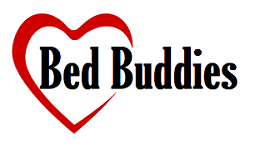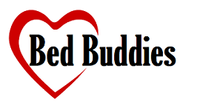Douche And Enema - What You Need To Know
1. Introduction to douching and enemas
Douching and enemas are two methods used to clean the colon and vagina to remove build-up of waste in the digestive system. They can be used by individuals who have a serious concern about their health or ongoing health problems, those who want to improve their overall wellness, or those looking for a hygiene solution for sexual activity. However, douching and enemas are not recommended for every individual, as they can have potential risks and side effects. It is important to carefully weigh the benefits and risks of each option before making any decisions regarding these types of personal hygiene products.
2. What are the differences between a douche and an enema?
A douche is a device used to cleanse the vaginal or anal cavity by injecting water or other liquid into the cavity. When the douche is used for the purposes of removing waste from the anus or colon, it is most commonly referred to as an anal douche. Enemas, on the other hand, are often administered as a form of treatment for various health conditions and are administered through the rectum. The differences between douches and enemas can be summarized by their purposes and methods of administration. A douche is typically used to cleanse the vagina or anus, and is referred to as douching, while an enema is typically used to treat certain health conditions and is administered through the rectum.
Wikipedia defines a douche as "A douche is a device used to introduce a stream of water into the body for medical or hygienic reasons, or the stream of water itself. Douche usually refers to vaginal irrigation, the rinsing of the vagina, but it can also refer to the rinsing of any body cavity."
The differences between a douches and an enema can also be explained by their methods of administration. While a douche is usually delivered via a syringe or nozzle, an enema is usually given via an intravenous drip or tube inserted into the rectum. Additionally, while a douche may be administered at home or in a medical setting, an enema is often administered in a hospital or medical clinic. These differences highlight the different uses and applications of these two types of plumbing tools.
3. What are the benefits of douching and enemas?
The practice of vaginal douching and enema has many benefits for women. First and foremost, douching helps to keep the vaginal ecosystem clean and healthy. It also helps to remove any harmful bacteria or toxins from the body. This can help to relieve any symptoms and discomfort associated with a variety of conditions, including:
- Irregular or painful menstrual cycles
- Menstruation and vaginal discharge such as menstrual blood
- Vaginal infections including yeast infections
- Vaginal odor, irritation, redness, and itching
- UTIs (urinary tract infections)
-pelvic inflammatory disease (PID)
-Endometriosis - Dysfunctional or blocked reproductive system
In addition to these benefits, douching and enemas have been shown to have a number of other health benefits, including:
- Improved bladder and bowel function
- Reduced risk of infection
- Increased levels of vitamin K2 (which is important for bone health)
- Increased resistance to oxidative damage
- Improved blood lipid profiles
- Reduced risk of certain cancers, including ovarian cancer, cervical cancer, endometrial cancer, and colon cancer
- Reduced risk of developing chronic Constipation
- Helps promote a healthy balance of bacteria in the gut.
-Elimination of harmful toxins and waste products from the body.
-Elimination of buildup of harmful chemicals in the body.
-Reduction in inflammation and immune system dysfunction.
-Enhanced skin health by maintaining a healthy balance of good bacteria in the gut.
There is also the health and hygiene benefits of using a douche or enema during sexual activity, as cleansing the vagina and/or anus both prior and post sexual intercourse will decrease any chance of infection, and any semen will be removed during the process, and it improves the sexual experience for all participants as cleanup afterwards is less messy. It is important to note that using a douche or enema after intercourse should not be considered a form of birth control.
4. Risks associated with douching and enemas
Risks associated with douching and enemas include infections, ruptures, and other complications. These procedures can cause damage to the reproductive system and may even lead to infertility. Additionally, there are risks associated with the use of these douching products, including gastrointestinal distress and potential poisoning. While some people swear by douching and enemas as a method of cleansing the womb, the vulva, the uterus, the cervix, and fallopian tubes, it is important to consider all the risks before making a decision about whether or not to douche or enema.
5. Types of douches and enemas
Types of douches and enemas can vary widely, depending on the desired effect and individual preferences. Some people prefer liquid-based products that are readily available and easy to use, while others may prefer more traditional methods, such as enemas delivered through a needle or douches with a suppository or suppository inserted into the vagina or rectum. The choice of method depends on several factors, including individual needs and preferences and availability of different types of products in a particular region or country.
Bed Buddies has a range of douches and enema, including the douche kit and the enema kit to suit your individual requirements.
6. How to use a douche or enema safely and effectively
Douches and enemas are a wonderful way to clean out your system, but they're not for everyone. Here's what you need to know to use these tools safely and effectively. First, make sure you have a doctors' recommendation or clearance from a qualified healthcare professional before using either tool. These tools are not just for young children or elderly individuals who may not be able to express their bowel movements. They can be used by adults of any age.
The best way douches are usually delivered is through a hose that's attached to a water pump or hand-pump. For use in the anus, you'll typically pour warm water into the pump and insert it into your rectum or anus. The water will flow into your colon and help you clean out waste material (i.e., poop). Enemas are similar to douches, except they deliver a solution into your intestine instead of your colon. They're often administered with a tube (like an IV) placed in your hand or foot. Both types of tool can be useful if you're looking for additional ways to cleanse your system and improve overall health.
That all being said, there are some safety precautions you should follow when using these tools for douching, especially if you've never tried them before:
- Don't use them if you have an infection, inflammation, or injury to the rectum or anus. These tools can cause serious problems if used incorrectly or if they're too powerful for your system.
- Use them slowly and gently at first until you get used to the process and know how much pressure is needed. Don't try forcing it!
- Be sure to hydrate before and after using either tool
7. Tips for choosing the right type of douche or enema
Choosing the right type of douche or enema is essential for a number of reasons. First, it can help to maintain a clean and healthy digestive system by removing waste from the body. Second, different types of douches and enemas can have different effects on the body, depending on their composition. For example, some may be gentler on the lining of the rectum or bladder, while others may provide additional benefits such as increased circulation or relief from pain. Finally, different types of douches and enemas can cost different amounts, which may influence your decision about which one to purchase.
8. Alternatives to douching or enemas
Many women find that douching or enemas are an effective way to maintain a healthy vaginal pH and cleanse the reproductive system. In addition, they can be used as a preventative measure against an infection. However, there are several options for women who wish to avoid these methods or who want to switch up their gynecological routine. These include:
-Regular hygiene routines, including washing with soap and water, and wiping after passing stool
-Using lubes and lubricants that are specially formulated for the vagina (such as those made from coconut oil) to reduce friction and increase comfort
-Using natural fiber sheets instead of synthetic materials to increase airflow and decrease the build-up of bacteria
-Eating a diet rich in fruits and vegetables, which have high levels of antioxidant vitamins, minerals, and plant compounds that support immune function and overall health
-Taking probiotics (live microorganisms) as a supplement to help restore the balance of good bacteria in the gut
-Switching to a balanced, whole foods diet with less processed foods
-Exercising regularly
-Avoiding tobacco, alcohol, drugs, and other chemicals that can negatively affect hormone production
-Engaging in positive activities such as yoga or meditation to promote relaxation and clear the mind
Conclusion
Douches and enemas are great ways to keep your intimate parts clean. They can help with odors, prevent infections, and generally make you feel more comfortable and confident in the bedroom. However, it's important to use douches and enemas responsibly and safely, so make sure you understand the risks and benefits of douching before using them. At Bed Buddies, we offer a wide range of douche and enema products from trusted brands, including the douche kit and enema kit, that can help you stay clean and healthy. So if you're looking for an effective way to keep your intimate parts hygienic, check out our selection today!




Want To Leave a comment?